Gas heaters for the garage: criteria for selecting a practical and safe option
Repairing a car yourself in winter is still a pleasure.In the cold, changing oil or a tire in a garage, if it is not heated, is not something any motorist really wants to do. Frost bites, so it’s difficult to cope without a good heating device.
However, you must agree that main gas today is the cheapest fuel for such equipment. At the same time, the range of devices for heating using blue fuel in stores is huge.
To make your choice easier, we've put together detailed information about what gas garage heaters are available. We analyzed their features and characteristics to make it easier to understand which device is more practical. Taking into account our advice, you can easily determine the best option for yourself.
The content of the article:
Is gas heating suitable for a garage?
Often, a private garage today is not just a place to store a car, but also a small personal workshop, a spare parts warehouse and a room for minor car repairs. It is usually connected to the electrical network, but not always to centralized heating.
It is too expensive to lay heating pipes along the street to such a building. Moreover, in the case under consideration, heating is not needed permanently, but only seasonally.

If the heating of the garage is organized using electricity, then huge electricity bills will discourage any desire to turn on the heating frequently. And the existing electrical networks are not always able to supply the necessary current for a good, powerful heater.
In the case of your own plot and private house, there will most likely not be any special problems with the required voltage. But in a situation with a garage array in the city, you can’t even dream of additional kilowatts. Electrical networks for such premises are usually designed for only a couple of light bulbs and a socket for low-power electric tools.
And cheap gas remains virtually the only alternative to electricity here. A diesel heater is too dirty from an environmental point of view.
A wood or coal stove is also not very suitable for a garage due to the increased fire hazard, the abundance of soot and the short duration of use. Wood stove It takes too long to heat up to be used to heat up a small garage workshop for a couple of hours of work.
Gas garage heaters powered by a cylinder are good:
- compactness and mobility of the heating device;
- low cost of equipment;
- availability of fuel (a liquefied gas cylinder can be filled at any gas station);
- environmental cleanliness and absence of soot;
- relatively low fuel price;
- ease of use of the heater;
- long service life of the device of 15–20 years;
- high rate of room heating.
Their only drawback is the risk of explosion and high risk of fire. However, if you follow the basic rules for handling gas equipment, then such a device is completely safe.
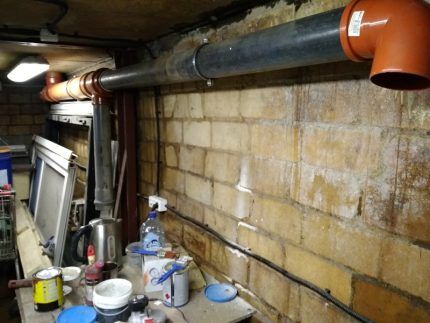
Gas heaters rarely explode. It takes a lot of effort to bring the situation to an explosion and even a fire during their operation. Electrical analogues burn much more often due to short circuits.
At the same time, an autonomous gas appliance in a closed room is dangerous due to the gradual combustion of oxygen inside the garage. If ventilation is poor and there is no influx of outside air, the gas in the burner may go out. And then, if there is no protection in the heater that cuts off the supply of fuel from the cylinder, it is not far from an explosion, fire or fumes.
Types of gas heaters
All types of gas heating devices for garages are divided into two types of models:
- wall;
- mobile floor.
The first option is usually carried out in the form of a powerful convector for main gas, more precisely a mixture of gases produced and transported through a gas pipeline, in which methane predominates. He needs to supply a pipe with fuel and make a smoke exhaust.
Such devices are installed very rarely in garages. A compact mobile analogue, designed to operate from a cylinder, is cheaper, easier to install and does not require approvals for connection.
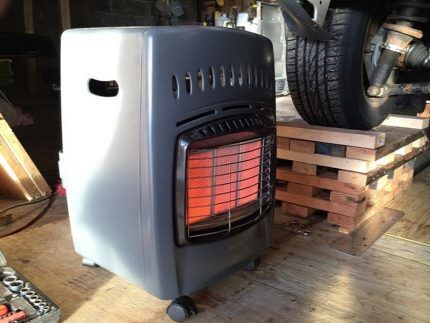
According to the design and principle of operation, gas heaters are infrared and convection. To stimulate the movement of heated air, convection models may or may not be equipped with a fan. Each of these types has its own advantages.
Option #1 – infrared
The operation of IR heating devices is based on the principle of “thermal radiation” of electromagnetic waves with a length in the region of 9.2 microns. Such infrared rays calmly pass through the air in the room without delay and heat the surfaces opposite the heater. And from the walls, ceiling and various objects, heat spreads further throughout the room.

The source of radiation in an infrared gas device can be a direct open flame or a ceramic heating element that receives energy from the burned fuel. Next, the IR rays are directed in the desired direction using a reflector.
Infrared gas equipment for space heating:
- does not require electricity to operate;
- differs in compact sizes;
- economical;
- silently;
- does not create convection and does not raise dust.
The basic disadvantage of IR gas heaters for arranging a garage or cottage is a narrow beam of heat. After switching on, the infrared emitter heats only those surfaces in the treated space where it is directed.
At the same time, walls and objects outside the range of the device remain cold without direct heating. As a result, a situation is possible where one corner of the room is heated and comfortable for car repairs, while cold is coming from the other.
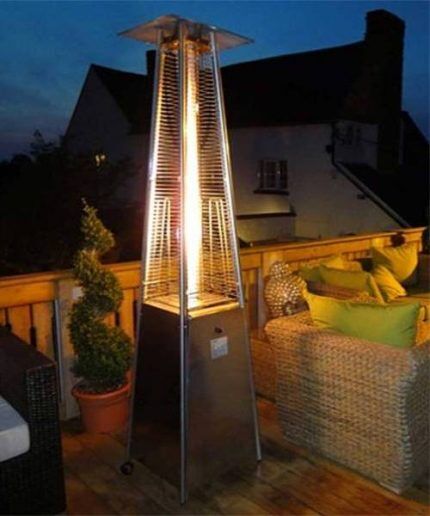
Most suitable for small garage spaces infrared devices on propane in the form of ceramic stoves with a cylinder inside or compact emitter panels. Both options usually have an oxygen and gas leak sensor, as well as fire protection. The power of such equipment is designed for heating garages ranging from 4 to 40 square meters. m.
Option #2 - catalytic
In catalytic infrared gas heaters, heat is generated due to the effect of catalysis - the oxidation of gas on a heating surface coated with platinum. There is no open flame as such. But as a result, propane “burns out” much more completely than in the case of a classic burner.

During operation, the heating element of the catalytic device heats up to 200 0C. Ordinary COs are formed at the output2 and N2Oh, but oxygen is consumed several times less than during open combustion of gas fuel. Plus, as a result, propane burns out almost completely and without the formation of carbon monoxide CO.
Catalytic infrared heater:
- economical in fuel consumption;
- does not form carbon monoxide when heating;
- fireproof;
- favorable for breathing, oxygen burns in the garage to a minimum.
The main disadvantage of such a device is its short service life. The catalyst in it is designed for continuous operation in the region of 2–2.5 thousand hours. This is about five to six months, and after that the heater can be thrown away. It will be enough for one winter season, but no more.
Option #3 – convectors
Convector gas heaters for garages have a ceramic or steel heat exchanger inside, which is heated by an open flame and then transfers heat to the garage using natural air convection. Such a device has holes at the bottom for the intake of cold air, and at the top for the exit of hot air.
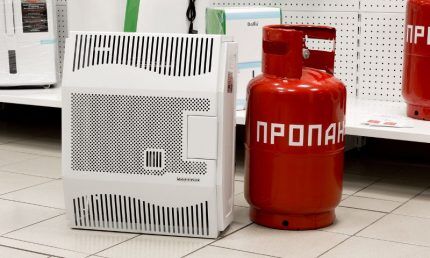
Among the advantages of gas convectors:
- burning gas in a closed chamber;
- no combustion products escaping into the room;
- high efficiency in fuel consumption.
Installation of a gas convector is usually carried out on the wall, in which a hole is punched for coaxial chimney. For short-term heating of the garage, this option is ineffective. But if you need to maintain the temperature inside for a long time at 5–10 0C, then this is the most suitable choice.
Some convector-type models are equipped with an additional fan for forced air flow through the heat exchanger. Such heaters are characterized by increased performance and are capable of heating large areas. However, they require power supply to operate, whereas a conventional device does not depend on the presence/absence of power supply.
Option #4 – heat guns
The fastest of all gas heaters in terms of speed of warming up the garage are heat guns. They may have a fan inside or operate only due to the draft from the burned gas. The former are more powerful, but the latter do not require connection to the mains.
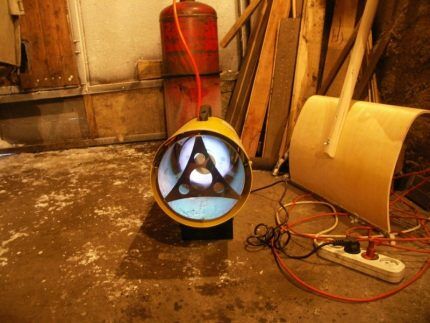
A heat gun allows you to quickly heat the cubic capacity of air entrusted to it in order to create comfortable conditions for car repairs. But if the garage is not insulated, then the heat, just as quickly entering the room, will immediately leave it outside when such a heater is turned off.
Among the disadvantages of the “gun” is also the raised garage dust. During operation, the device creates a powerful stream of heated air, lifting even small debris from the floor and shelving in the garage. Otherwise, it is an efficient and powerful heating equipment.
Choosing the best device
When choosing a gas heater for your garage, you must base it on your specific needs. If you have to work in a garage on a regular basis and for a long time, then it is better to purchase a convector. And if you need to quickly warm up the air for half an hour, then a heat gun is most suitable.

Catalytic heating devices are expensive, but they are absolutely fireproof and burn an order of magnitude less oxygen in the garage. Ceramic models are inexpensive and have a long service life.
Mobile household heaters using bottled propane in stores are offered with a power from 1 to 15 kW. Find the best option for garage any area will not leave much difficulty.
At the same time, there is absolutely no need to take a powerful device for a small room. It will burn excess fuel, and the output of the generated heat will be of no use, since the garage building will have to be ventilated more often.
Conclusions and useful video on the topic
Gas infrared heater review:
Pros and cons of an infrared gas heating panel:
Calculation of gas costs for a garage heater:
There is no ideal gas heater model for all garages. In each case, you should choose your own option. The range of such heaters is huge; finding the most suitable equipment in terms of power and principle of operation will not be difficult.
And most importantly, when choosing a gas-powered device, you should not skimp on protective elements, otherwise you won’t be far away from a tragedy with a fire or explosion.
Please leave comments, post photos and ask questions about the topic of the article in the block form below. Tell us about how you selected a heater for your own garage. Share what was the decisive argument in your choice.



